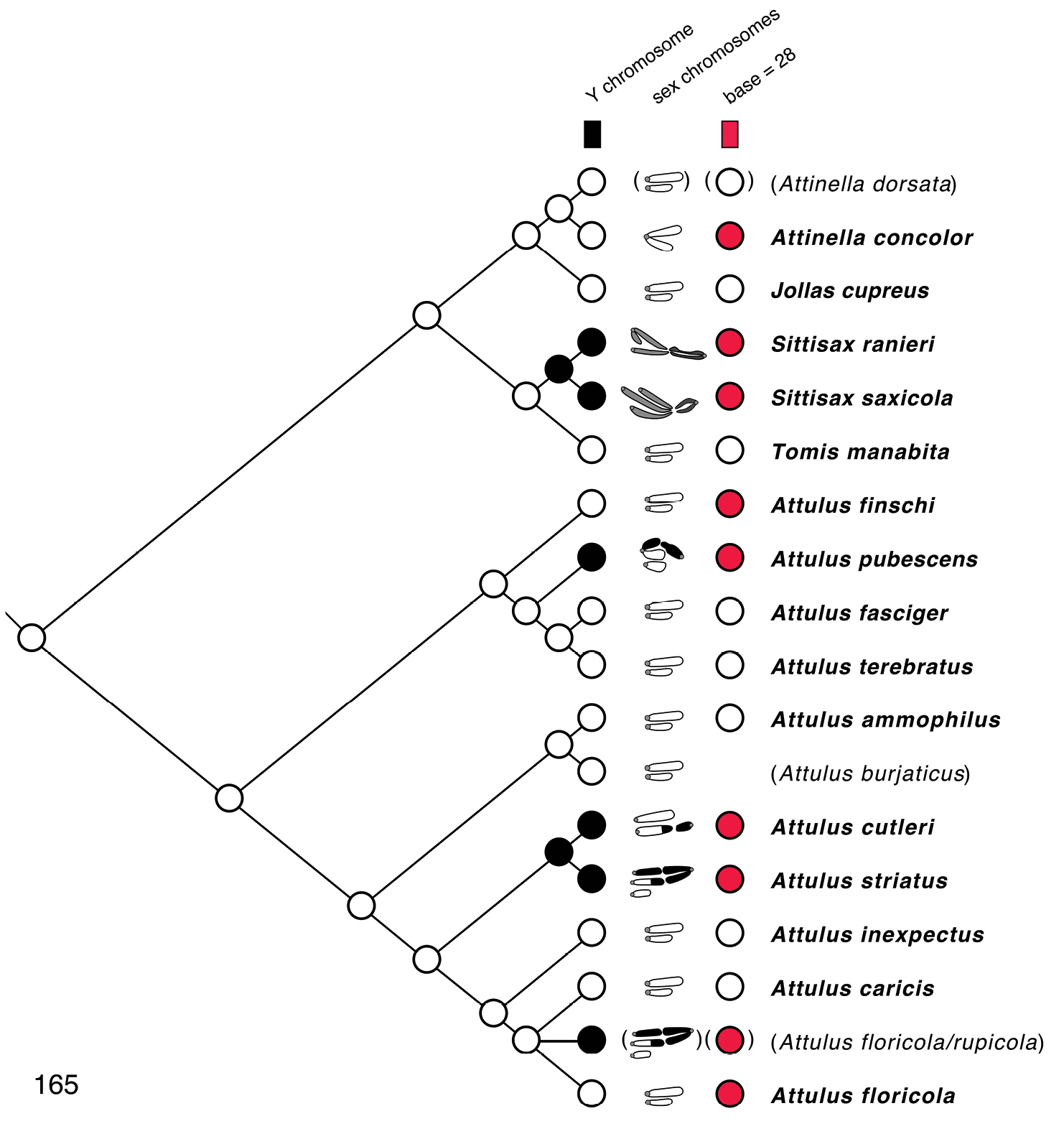
|
||
|
Chromosome evolution in sitticines. Ancestral nodes show the most parsimonious reconstruction of the evolution of Y via X-autosome fusions (black) from the X1X20 sex chromosome system (white). Phylogeny from Figure 48 with species added as follows: Attinella concolor is very similar in body and genitalia to A. dorsata; likewise Sittisax saxicola to S. ranieri; Attulus caricis position based on COI results (Fig. 96). The similar pair A. cutleri and A. striatus were placed as sisters to the floricola group based on their inclusion in the floricola group by Logunov and Kronestedt (1997) and in Sittiflor by Prószyński (2017a). Base chromosome number is directly the number of autosomes if the species has XX0 sex chromosomes, but is interpreted as the number of autosomes +2 if the species has XXY sex chromosomes (apparently derived by a single fusion that would have consumed an autosomal pair), or + 4 if XXXY (apparently derived by two fusions that would have consumed two pairs). Uncertain scoring is shown by parentheses (see Table 2). |